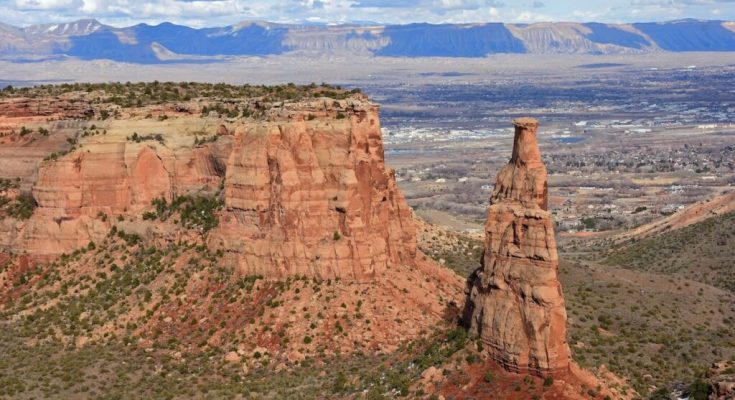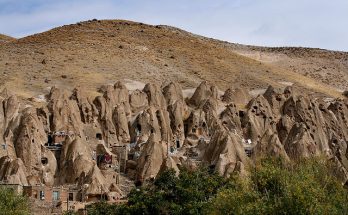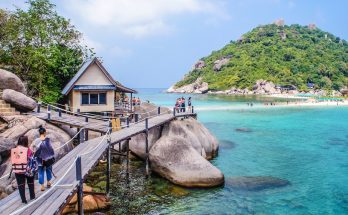When people ask me what is the best place I have been to in the USA, my answer, without hesitation, is always the Colorado National Monument.
Contrary to popular belief, this spectacular area – located near the city of Grand Junction – is not a national park. Despite being a National Park Service Unit!.
Instead, it was declared a National Monument by 27th US President William Taft in 1911, who clearly was as impressed with it as I am.
Allow me to tell you why.
What is Colorado National Monument
Encompassing over 20,500 acres, the Colorado National Monument is an incredible, wind-swept desert landscape that resides on the magnificent Colorado Plateau.
It features towering formations of granite–gneiss–schist rock and sheer-walled canyons, interspersed with lush juniper and pinyon forests.
Boasting rock formations that date back 1.7 billion years, I first became aware of the Colorado National Monument from a TV show called Heart of the World: Colorado’s National Parks.
I was awestruck by its incredible landscapes, and the poetic words that the narrator, Kathy Mattea, used to describe it, and instantly made a pledge to myself to go there.
Where is Colorado National Monument

The Colorado National Monument is located about 17 miles to the east of the border with Utah, roughly halfway between Denver and Salt Lake City. It is about a 30-minute drive from Grand Junction in Colorado.
I visited it the next day after driving from Denver – a journey of about 4.5 hours along the I-70 West. However, you can just as easily get there from Cedar City, Moab or Salt Lake City in Utah.
There are two main entrances to the Colorado National Monument off Rim Rock Drive – the eastern and western. I took the eastern entrance at Grand Junction, which was closer to my hotel. However, you can choose to take the western entrance through Fruita if it is more convenient for you.
Best time of year to go there

The best time to visit the Colorado National Monument is during the spring or fall season. I went in late September and found the weather to be very pleasant (around 26° Celsius) and the visitor numbers were not high at all. So, I would recommend going then.
You should be aware that if you decide to head there in summer, the temperatures can be brutal, with the mercury regularly topping 100+ degrees Celsius.
There is very little in the way of shade here and the rocks reflect the heat. So, if you plan on partaking in any hiking activity, I would recommend doing what I did and arriving there at sunrise and being back in your air-conditioned motel room by around 10.30 am.
That said, if you want to time your visit for winter, the monument is apparently breathtaking after a snowfall. I hope to do this next time I am there, though I have been warned to dress up very warmly and make sure my car has snow chains.
When you first get there

As there are plenty of things to see and do at the Colorado National Monument, I recommend scheduling at least two days, if not three, in the area.
I ended up spending two full 10+ hour days there, taking in all its wonderful sights. However, I did this over three days in total, with a rest day in between. On reflection, I am glad I did this, as I would have been pretty tired by the end of two long and demanding, consecutive days of sightseeing.
When I got to the Colorado National Monument, the first thing I did was drive an entire loop of it. This took around an hour without stopping, and it gave me an excellent introduction to the landscape that unfurled before me.
Along the way, I made some notes on a voice recorder of places I would like to stop, to take in spectacular views and see points of interest. Doing this enabled me to plan out the rest of my day, and second one, there better.
Main highlights

I really enjoyed making my way through Rim Rock Drive as it took me on a 23 mile journey through six different red rock canyons. Within each were distinctive sandstone monoliths and cliffs that were utterly captivating.
My favourite was Cold Shivers Point, which reminded me of a shark’s fin – to the point that I could almost hear the Jaws music!
I also spent a bit of time at Artists Point. There I hiked down past its Squaw-like Fingers to a fascinating area that showcased incredible rock art, carved tens of thousands of years ago by the hands of Indigenous people.
I found the intricacies of the detailing quite fascinating, and as I was not on a guided tour, I could only wonder what story they were trying to tell me.
However, as enjoyable as these sites were, my abiding memory of Colorado National Monument will always be seeing the sunset at Red Canyon Overlook.
The vivid, fiery sky colours of the setting sun, blazing against the backdrop of the plateau and vast canyon walls, were simply mesmerizing. It was the perfect way to conclude my second day there.
Tips for Visiting Colorado National Monument

There is nowhere to buy food within the Colorado National Monument, so make sure you stock up on supplies before you arrive. I did this at the Safeway on Broadway in Grand Junction, so had plenty of sustenance to keep me going throughout a very long day.
As the elevation at the Colorado National Monument ranges from 4,000 to 7,000 feet, you should take precautions against altitude sickness. I did this by ascending slowly, taking regular breaks to acclimatise myself and drinking plenty of water.
If you need somewhere to stay overnight, Grand Junction has a number of inexpensive hotels and motels. I stayed at the Grand Vista Hotel on Crossroads Boulevard, which, as it was just 10 miles from the western entrance, meant I didn’t have that long a drive to when I left the monument.



